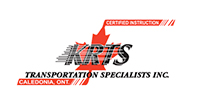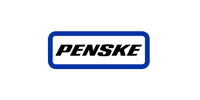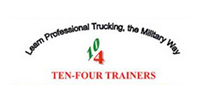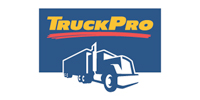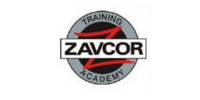Better aerodynamics, improved oils, enhanced stability ... and trucks that drive themselves? They may be closer than you think.
“Some of the things that are happening now are making the average driver closer to the best driver.”
– Jennifer Rumsey, Cummins
At first glance there was nothing unusual about the two trucks and three cars merging with other traffic on a highway near Barcelona, Spain, but there was nothing usual about the way they were controlled.
The driver of the Volvo FH truck at the front of the pack was the only one with his eyes on the road and hands upon the wheel. “Platooning” vehicles behind him automatically mimicked the lead truck’s every turn, applied brake or change in speed, maintaining a tight four-metre following distance along the way. No driver actions were required. A Volvo project manager in one driver’s seat actually illustrated the point by reading a magazine during the trip.
This 2012 test represented a key milestone in the European Safe Road Trains for the Environment (SARTRE) project, and it was not the only demonstration of its kind. Half a world away, Japan’s New Energy and Industrial Technology Development Organization (NEDO) ran a tightly packed group of four trucks in another showcase of wireless controls. In that 2013 test the trucks in the rear didn’t have any drivers at all. Similar research has been conducted at the University of California Berkley and the Scania Transport Laboratory.
Automated and tightly grouped convoys – using a high-speed wireless communications network to combine tools such as radar, adaptive cruise control and automated steering – could potentially be used to improve fuel economy through better aerodynamics, help to better manage traffic flows and reduce collisions.
“Even the lead vehicle is saving fuel,” says Volvo’s Carl Johan Almqvist, referring to the benefits. “The whole idea we have is you would have a dedicated driver up front who is specially trained to be a platoon leader.” Joining such a platoon would be similar to sitting in a passenger plane, he adds. “You don’t think to check if there is a pilot up front.”
Of course, there are limits in how long the automated group could be. A platoon that is too long would make it hard for surrounding vehicles to merge onto a highway, pass, or even reach an onramp. “Somebody might not even understand that it is a platoon and they try to move in between the vehicles,” Almqvist offers as another example. Solutions could include communications networks between vehicles, opening a wider gap if a passing motorist activates a turn signal.
Any changes like these would require updated highway regulations, and they would certainly come at a premium cost, but the supporting equipment is hardly the exclusive fodder of science fiction movies. Australian mining companies are actively using remote-controlled haul trucks. Controls from Bendix and MeritorWABCO combine radar, brakes and engine power to maintain pre-set following distances or even help avoid rear-end collisions. Assisted steering, applied if a driver begins to drift from a lane, is now an option on several cars.
“It opens up a lot of interesting things you could do to aid the driver,” Almqvist says.
They are not the only technological gains to come.
BETTER FUEL ECONOMY
In the shorter term, many changes to available trucks will focus on fuel efficiency. The latest round of emission standards focus on reducing Greenhouse Gases, and the only way to do that is to burn less fuel. The targets set for 2017 will also require truck makers to look beyond the engine and involve other vehicle systems.
Increasing the focus on fuel, the U.S. Department of Energy’s 21st Century Truck Partnership is bringing together major manufacturers in four demonstration vehicles that are already offering a glimpse of gains beyond that. There are Waste Heat Recovery Systems putting once-wasted engine temperatures to work, GPS-enabled cruise controls, hybrids, and tractor-trailers designed as complete aerodynamic packages. The latter option holds particular promise for dedicated and private fleets, says Ken Howden, the project’s director. Under the hood, the project’s focus on cleaner combustion processes will do more than improve fuel economy, he adds. It will help to extend the life of expensive emission-controlling components. [See examples of the gains on page X.]
Future exhaust aftertreatment systems will be tied closer to the engine and the overall vehicle to improve combustion, reduce parasitic losses, and address challenging temperatures, says Jennifer Rumsey, Cummins’ vice-president of engineering – engine business. “Some of the things that are happening now are making the average driver closer to the best driver.”
Waste Heat Recovery Systems alone could improve fuel economy by as much as 5%, capturing the energy that would otherwise be lost, she says. The goal is to develop a version that could pay for itself in 12 to 18 months, and there are still several ways it could be accomplished. Some of the captured heat, for example, might come from the Exhaust Gas Recirculation systems used to reduce NOx. “We’re also recovering heat downstream in the aftertreatment system.”
“Waste Heat Recovery and hybrid systems, at some point, will become common technologies,” Rumsey adds, referring to changes she expects to come in the next 10 to 20 years. “We’ll see partial electrification building up to full hybrids.” Changes like that can support lower-displacement engines, shedding weight and improving fuel efficiency.
Other engine enhancements will look to reduce parasitic losses. Gains here can be realized by introducing variable speed pumps which only use the power needed at a specific moment, Rumsey says as an example. Downspeeding, allowing an engine to run longer at a lower speed and torque, can be realized with an added focus on rear axle ratios and gearing. “The truck, and how they did it a decade ago, has changed,” she says.
The fluids which protect the engine components are in for a change of their own. The next generation of engine oils known as PC-11, scheduled for release in 2016, will replace the CJ-4 oils that have been used for a decade. The new lubricants will address higher average engine temperatures, expected to climb about 10 Celsius, and help to better protect against oxidation and scuffing. “Soot particles that get into the crankcase and into the oil can get very abrasive,” says Dan Arcy, Shell Oil’s OEM technical manager. And they promise to play their own role in better fuel economy thanks to changing thicknesses. [See the Editor’s View on Page 5.]
STABILITY CONTROLS
Beyond the promise of better fuel economy, safety enhancements have enjoyed a focus of their own. Roll Stability Controls, for example, can help prevent rollovers by selectively applying brakes. This March, the U.S. National Highway Traffic Safety Administration is expected to announce a Notice of Proposed Rule Making that will mandate stability controls in two years, and such rules are usually echoed in Canada.
Bendix is actively making the case for systems in the form of full Electronic Stability Controls. Both types of stability systems have lateral acceleration sensors, measuring the forces that can tip a trailer on a ramp with a decreasing radius, but Electronic Stability Controls add yaw sensors, determining how the vehicle is twisting around a central point, and steering angle sensors to tell where a driver is actually trying to move.
The biggest difference would be seen during a double lane change in slippery conditions. As the driver steers from one lane to the next and back again, and the trailer begins to push the tractor, the yaw sensor will recognize the signs of trouble and apply brakes to specific wheels. “It will try to slow the vehicle down and try to tug out the combination,” explains TJ Thomas, director of marketing and customer solutions for the Bendix Controls Group. “It will help the driver steer through the maneuver.”
This latest generation of stability controls was actually the next logical step in equipment first designed to introduce anti-lock brakes. Electronic Control Units, which process the information from sensors, control the brake valves.
Emerging electronics are going further still. “We’re adding self learning,” says Mark Melletat, Meritor-WABCO’s director of fleet operations. “The units can calibrate themselves through the life of the vehicle.” Rather than setting everything up for a perfectly new vehicle, this means the system will adapt to issues such as wearing tires and front end alignment. That will be welcome news in any garage. Fewer parameters will need to be reset when replacing parts.
Meanwhile, regulators are also looking at collision mitigation systems, applying the brakes if there is the threat of a rear-end collision, which brings us another step closer to platooning trucks.
Early adopters of the radar-based collision systems have included private fleets such as Walmart and Praxair, and some users have seen rear-end collisions drop by more than 80%, Melletat says. But tougher safety ratings systems, such as the U.S.-based CSA program, are leading a longer list of fleets to look for technical solutions to safety challenges.
Looking further into the future, Melletat expects to see the radar systems combine with vision-based equipment like the cameras used for lane-departure warning systems. “Cameras do a good job of object detection,” he says. “It’s not full autonomous driving, but it gets you closer to these levels.”
Think of it as another coming attraction along the way.


























